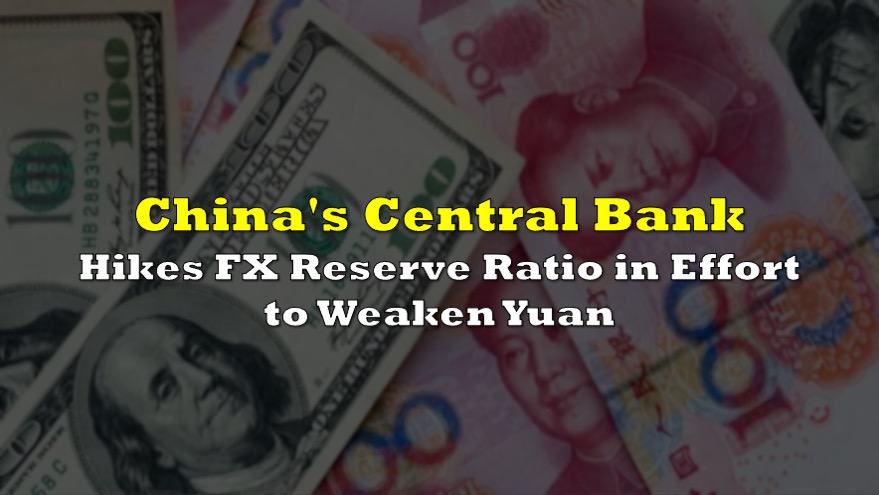Amid signs that the Chinese yuan is gaining considerable strength, the communist country’s central bank has decided to step in and curb some of that momentum. For the first time in more than 14 years, the People’s Bank of China (PBOC) has said it will increase the required-reserve ratio on foreign currency deposits that banks are required to hold from 5% to 7%.
Come June 15, China’s financial institutions will now have to hold more of their foreign exchange in reserve, said the country’s central bank in a statement on Monday. This marks a hike of 2 percentage points, and the first such increase since 2007. The latest move, which the PBOC says is expected to aid with liquidity management, will ultimately decrease the supply of the US dollar and other currencies onshore, thus weakening the yuan. Following the news, China’s currency fell 0.2% on Monday afternoon.
Albeit some analysts anticipate the impact to be relatively minuscule, the latest move by the PBOC suggests that the communist country is less than pleased with the yuan surging to the highest in three years against the US dollar. “The PBOC wants to show the market — if the rally keeps going, it has many measures to slow it down and the market will fail if it wants to make speculative bets,” explained Singapore Commerzbank AG economist Zhou Hao to Bloomberg. “It’s more of a symbolic move, as no matter how the PBOC boosts funding costs on foreign exchange, the rate on the yuan will almost always be higher.”
The foreign-exchange ratio increase is expected to halt approximately $20 billion in liquidity, demonstrating that the Chinese central bank is strongly determined to interfere in the yuan’s robust appreciation. And, as former official at the State Administration of Foreign Exchange Guan Tao tells Bloomberg, the PBOC likely has even more tools to bring out in the event that further speculation in the currency market emerges.
The latest appreciation in the yuan is strongly correlated with China’s booming economic comeback from the Covid-19 pandemic, as the country’s higher-yielding markets attract an onslaught of global investors. Compared to a basket of trading counterparts, the yuan is the strongest since 2016.

Information for this briefing was found via Bloomberg. The author has no securities or affiliations related to this organization. Not a recommendation to buy or sell. Always do additional research and consult a professional before purchasing a security. The author holds no licenses.









